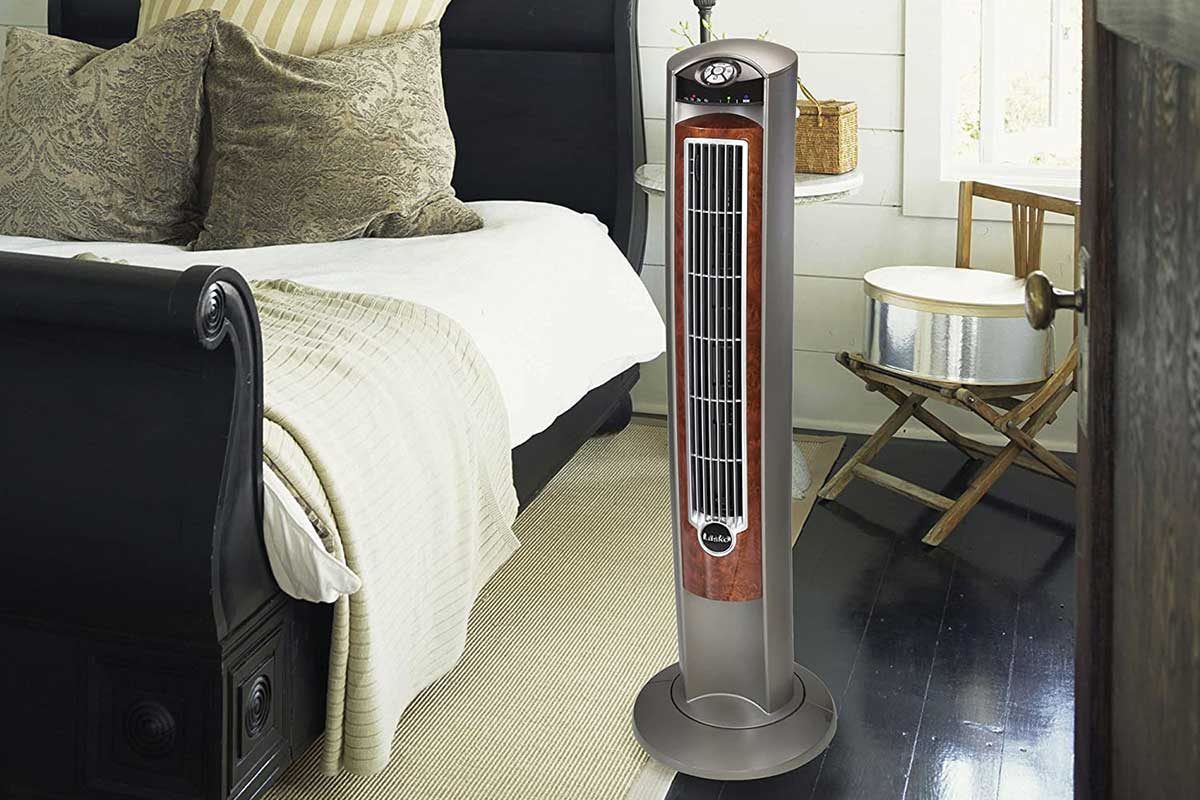Tall, compact tower fans can significantly cool down your rooms when temps soar. Plus, they don't take up much space on your floor!
Our editors and experts handpick every product we feature. We may earn a commission from your purchases.Learn more.


Tall, compact tower fans can significantly cool down your rooms when temps soar. Plus, they don't take up much space on your floor!
Our editors and experts handpick every product we feature. We may earn a commission from your purchases.Learn more.
Tall, sleek tower fans take up little floor space while efficiently cooling your rooms. When the temperature rises, an air conditioner, ceiling fan or other cooling devices can only do so much. A tower fan can bring down a room’s temperature without cluttering up your space and is easy to store when not in use.
The best tower fan is efficient, has a relatively low noise level and is lightweight enough to move around easily. When considering a tower fan purchase, take into account the size of your room, your budget and style preference.
On This Page
Traditionally, fans cool down a room by using the force of blades to draw air through the unit. The air is pulled from behind and pushed forward to create a draft. A tower fan pulls air in using side vents that are neatly tucked within the housing. The air is spun around before it is pushed through the front of the unit.
Tower fans often have more features and aesthetic value than traditional fans.
From cylinders on sticks to tall, slim tower fans that rotate on a base, there are a few tower fan types to choose from for indoor and outdoor cooling.
This type of tower fan blows air from a ring that has no external blades. Hidden vanes in the pedestal blow a thin, high-velocity stream of air through a continuous opening across the tube, or elongated doughnut-shaped hole. The design is attractive and easy to clean compared to a tower fan with vents.
Oscillating tower fans rotate back and forth and can offer more comfort over a larger area than fans that are fixed and direct air flow to one specific area.
These are fans on a pole with a wide base. They are sturdy, sleek and blow air only from the top of the fan. This type of tower fan works well for placing behind furniture or to aim air above a bed or other platform.
A damp- or wet-rated fan is designed to be placed outdoors or in areas where moisture can build up, such as bathrooms or laundry rooms. Outdoor fans can hold up to humidity and have a specially designed motor housing to protect the wiring.
Additional tower fan features to consider when weighing your options:
Regular maintenance keeps your tower fan in good working order throughout the seasons. (Additionally, follow the manufacturer’s instructions and never submerge a tower fan in water or allow the motor to come in contact with anything wet.)
Daily Maintenance: Wipe down the outside of the tower fan with a dry cloth to keep the fan grilles free from dust and debris. This is particularly important if you live in a dusty or humid area. When dust or debris is allowed to build up on the fan grilles, it can cause problems with airflow and eventually the fan’s motor.
Weekly Maintenance: Use a vacuum cleaner with a soft brush attachment to clean the vents. This will remove dust, oils, hair and debris from the narrow vents and keep the air flowing freely and cleanly.
Monthly Maintenance: Many tower fans have a filter that needs regular cleaning. Unscrew the air filter hatch and vacuum the filter or wash it with plain water. A few quick bursts of compressed air can remove even stubborn layers of dust and clumps of debris.